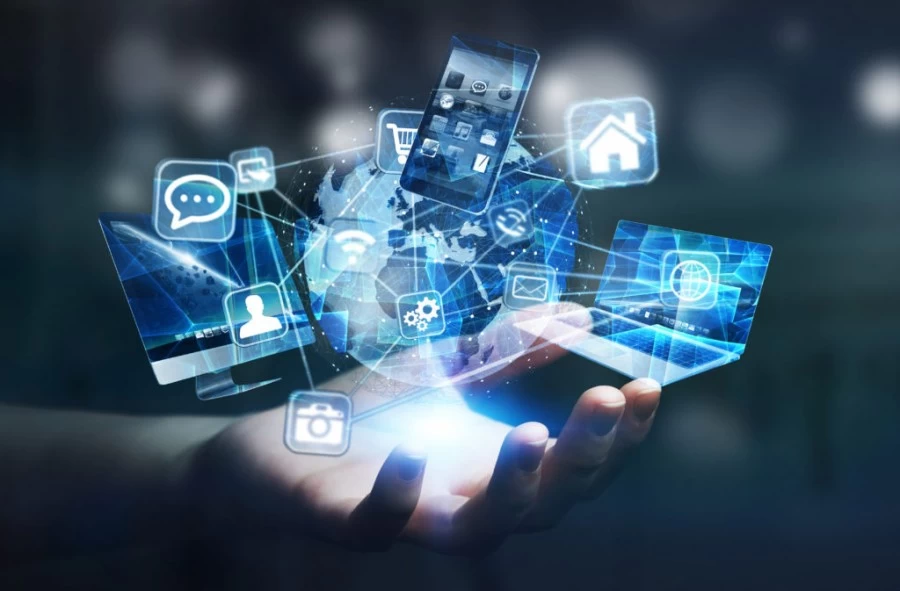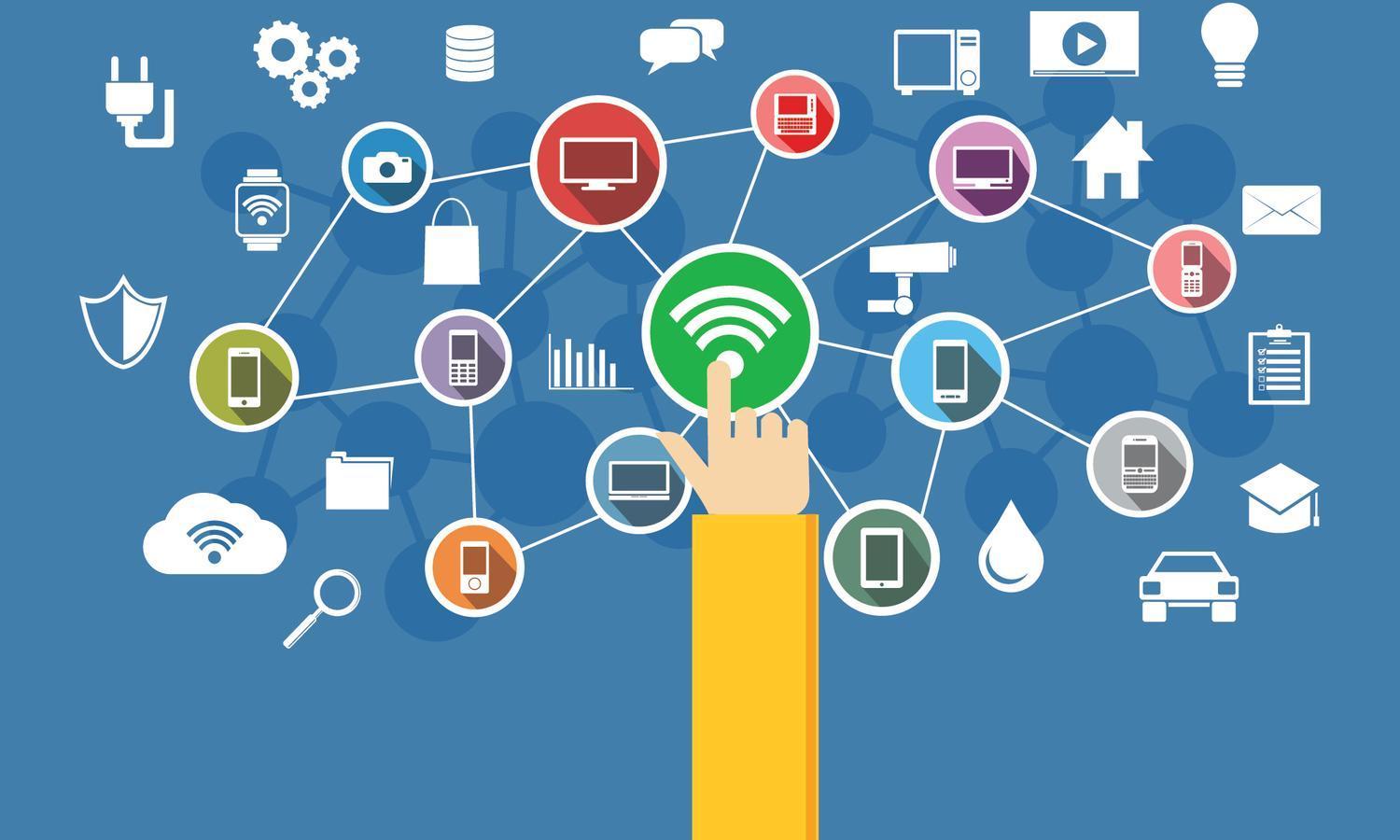Examples of the Internet of Things – The Internet of Things is growing at an exponential rate. There are now countless examples of IoT devices that are already part of our everyday lives. However, the technology has also made its way into many other industries and sectors. This is why it’s important for us to know what’s available, how it works, and how we can start making money from it.
The Internet of Things (IOT) is becoming more and more common in our everyday lives. It’s now possible to connect many things together via the internet and use them to automate and control tasks.
We’ve already seen how this is used in homes to make sure the lights are off before we go to bed.
This is just the tip of the iceberg though, and I expect that in the future we’ll see a lot more devices connected to the internet.
The internet of things is an emerging technology that has the potential to transform many aspects of our lives. The IoT is expected to become the dominant network in the near future.
The Internet of Things is a network of objects, vehicles, buildings, and other items that are embedded with electronics, software, sensors, actuators, and network connectivity that enable these objects to collect and exchange data.
The IoT is already being used in numerous industries, such as healthcare, manufacturing, and transportation.
In this article, I’m going to give you a few examples of how IoT can benefit your business or life.

Industrial IoT
Industrial IoT is a growing trend in the industrial world. It has the potential to save millions of dollars and reduce energy consumption by cutting out the need for constant human supervision.
For instance, if you own a factory, you could monitor the temperature of every part of your building with a sensor. This allows you to make decisions before the building burns down. It could also help you to save money by being able to automatically shut off power supplies or turn on fans when the temperature gets too high.
The concept of Industrial IoT is pretty simple. Sensors are installed throughout your facility and connected to the internet. Once connected, sensors can send information back to your server where it can be analysed.
IoT is the acronym for Internet of Things. In other words, it’s an internet-connected network of devices that can talk to each other. It can be used for a variety of different purposes, but for this article, we’ll focus on industrial IoT.
As you probably guessed, IOT is a big deal right now. The concept has been around for a while, but has only recently become mainstream.
Now, there are plenty of things that can be done with IoT, but in this article, I’ll focus on the potential for improving manufacturing processes. This means saving energy and money, and increasing productivity.
Smart city IoT
Smart cities are becoming more and more popular in the world. There are many different technologies being used to enhance the experience of these cities. IoT is one of them.
IoT stands for Internet of Things and refers to the ability to connect devices over the internet. This allows us to interact with the physical world in a way we never have before.
This includes things like smart homes, smart cars, smart watches, and even smart cities.
The best part is that we can create IoT applications for almost any field and start making money immediately.
Smart cities are the future. In fact, this is the only type of city that is even possible. Why? Because IoT allows us to collect data from every aspect of our lives.
We can know exactly where people are at all times and we can use this data to improve the efficiency of everything from traffic patterns to healthcare.
This is the future, and it’s coming very soon. So much so that smart cities are already being built.

Healthcare IoT
As technology continues to advance and the medical industry is moving towards a digital-first future, healthcare is becoming more connected than ever before.
We are already seeing IoT devices used in various clinical settings. This includes everything from monitoring patients in hospitals to remote patient monitoring.
I predict that these devices will continue to become more advanced, and that we will see them integrated into our homes and cars.
IoT has become a buzzword for many in the tech community and many businesses. As an industry, we are still working out how we will be able to incorporate IoT into our current systems.
However, there is no doubt that healthcare will be at the forefront of this revolution. This is because our health is dependent on IoT, whether we like it or not.
Healthcare is ripe for IoT implementation, but also carries a number of security concerns and privacy implications. Therefore, we will need to make sure that we are aware of these issues, and ensure that we are looking after the interests of both patients and providers.
Consumer IoT
The future of technology is consumer-focused. We’re starting to see this trend play out, especially with mobile devices.
It’s not hard to imagine that the Internet of Things will become the next big thing. Just look at what’s already happening in the world of consumer electronics.
So, how do you get involved in the Consumer IoT revolution? By learning about the different types of devices, and what they’re capable of.
You’ll have to research what each device does, how to set it up, and what type of user interface is needed. It’s not exactly like building a website, but it’s similar enough that it’s worth learning.
Consumer IoT is the next big thing. Smart devices are becoming increasingly common, and they are connecting us to each other, as well as the Internet of Things.
The Internet of Things is a network of physical objects that connect and share data through the internet. These smart devices are already in our homes, but the future holds many more possibilities.
I expect that by 2022, we will be seeing a huge surge in the number of connected devices, and the growth will continue to accelerate.
There are three main reasons why I believe this is true. Firstly, technology is becoming cheaper and more accessible. Secondly, we will be able to connect more devices to the internet. And finally, the internet itself is becoming more open and available.
It’s important to note that, while the majority of people will be using the internet to access the internet of things, not everyone will be directly using IoT devices.

Frequently Asked Questions (FAQs)
Q: Where did the idea for “Examples of the Internet of Things” come from?
A: When I was working on my book on the internet of things, I came across some cool examples of how technology has evolved over time. I thought they would be great for our readers to see.
Q: How does your job as an illustrator fit into the Internet of Things?
A: My job as an illustrator really fits in with the Internet of Things because it is about connecting devices together, making them interact with one another, and ultimately helping people understand how these devices work.
Q: What was it like for you to create these illustrations?
A: It was a lot of fun. I enjoy the challenge of figuring out how to show different kinds of technology in a way that is still understandable.
Q: What’s the most important aspect of the Internet of Things?
A: The Internet of Things connects everything. You can connect your car with an app on your phone, or your refrigerator with your phone, or a device to turn your lights on and off. When I think about how this will be the future, it seems like a great idea.
Q: What is the most interesting device you’ve used in the IoT world?
A: I use my iPad to control my light system, so that when I turn on the light, it turns on all the lights in my house. If I’m home, then I can turn them off when I leave. But if I’m away from home, then I can remotely turn them off.
Q: What’s the strangest Internet of Things device you’ve used?
A: I use a voice assistant on my iPhone to control my smart home.
Myths About Internet
1. The Internet of Things (IoT) is just another marketing hype.
2. IoT will not replace the Internet.
3. IoT is a technology that will not solve all our problems.
Conclusion
The Internet of Things (IoT) is quickly becoming a very popular term to describe the future of everything. The term was coined by Kevin Ashton, the founder of the Auto-ID Center at the Massachusetts Institute of Technology.
So what does the IoT actually mean? The Internet of Things means we’re creating the world where every object on earth has an IP address.
The idea is that objects of everyday life will be equipped with sensors that can measure and communicate data. In other words, IoT is the network of networks.
This will enable us to interact with objects through devices such as smartphones, watches, cars, and appliances.
So, how exactly can we make this happen? For starters, there’s going to be a huge increase in the amount of data generated by these devices. As a result, there is a need for powerful tools to manage all of this data.
We’re going to explore some of the most interesting examples of the Internet of Things in action.
First, we’re going to look at the Philips Hue light bulb. This is an incredibly simple IoT device that allows users to remotely control their lights.
Next, we’re going to explore a product called the BLE beacon. This product is used to track objects. The idea is that you place a small Bluetooth enabled device on a shelf or desk that can detect items like books, keys, etc.
Then, we’re going to look at a product called the Nest thermostat. This is a very sophisticated IoT device that allows you to control your heating and cooling system remotely.
Finally, we will look at an example of a product called the Amazon Echo. This voice-controlled IoT device allows you to make purchases, check the weather, play music, and much more.















